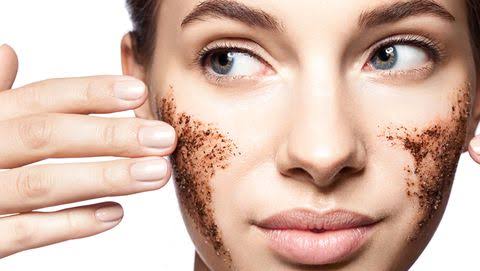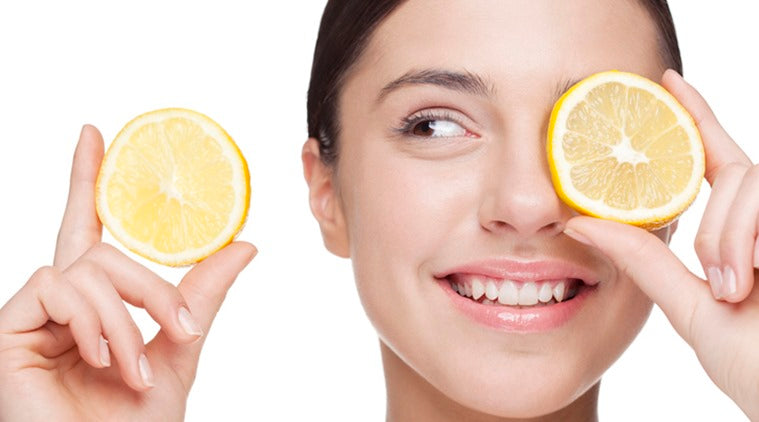Physical or Chemical Exfoliation - Which Is Better?

Exfoliation is a little like cleaning out a dusty closet- messy, frustrating, layers of dirt all over...It can be emotionally and physically draining, but absolutely necessary! Tidying up on a daily basis results in less junk and less time being spent cleaning out cobwebs. Either way, the end result is fantastic. You feel accomplished, everything is in place, and your closet looks neater. Exfoliating the skin, ladies, feels similar. It may be hard to take out time to tend to your skin, but the result, we promise, is glowing, dewy skin. How can you achieve that unless you exfoliate regularly?

In today’s day and age, you will find an overwhelming number of exfoliants on the market. These are divided between physical and chemical exfoliants. Even though they do the same task- get rid of dead skin- they have very different ways of doing so. It is important to exfoliate the correct way so that your skin can absorb serums, moisturizers, and makeup better. After all, shouldn’t you get the best of your expensive products? What’s the point if they just sit on top of your skin, trapped by all the dead skin and gunk? Here’s a breakdown of the two kinds of exfoliation you can choose from-
Physical or Manual Exfoliation

Kylie Jenner’s recent controversy over a $22 walnut scrub is something you wouldn’t expect to see on “Keeping Up with the Kardashians.” However, it has set twitter ablaze and received harsh criticism from skincare professionals. Why? It's the same reason St. Ives was sued for their bestselling Apricot Scrub - physical or manual exfoliation can be extremely harsh on the skin if you're not careful about the products you use, and the pressure you apply. While the massaging motion stimulates circulation to your cheeks and this makes them look temporarily rosy, physical exfoliants need to be handled gently! They can be unnecessarily harsh and abrasive on the skin if you're not careful, leading to micro-tears, dryness, infections, irritation and over-exfoliation. Micro-tears are tiny cuts in the skin created by agents that have uneven or jagged edges such as pine nuts, walnuts, apricots, net shells, or fruit pits. These are all "natural" ingredients, but they do not break down easily in water or through friction, and so you're exposing your skin to quite a lot without knowing it. Should you opt to use a physical exfoliant, here's what you need to know:
- You should have durable skin that is tough and resistant to itchiness, dryness or tearing
- You own a scrub that is gentle on the skin and does not contain nut shells or fruit pits
- Don’t exfoliate more than twice a week
- Don’t use too much pressure while exfoliating
- Rice bran flour is an excellent exfoliator for those looking for an "all-natural" option that is still gentle
Chemical Exfoliation

A gentle yet effective way to exfoliate, chemical exfoliants make use of chemicals to help with cell turnover. Not only do they leave your skin soft, but they also have a brightening effect! Chemical exfoliants such as AHAs (alpha-hydroxy acids) and BHAs (beta-hydroxy acids) dissolve the top layer of dead skin to reveal brighter skin. They can also heal hyper-pigmentation, acne, uneven skin tone and help reduce fine lines, wrinkles, and the appearance of large pores.
AHAs like glycolic, lactic, and malic acid are derived from natural substances and are great for exfoliating dry skin. Then you have another category of natural AHAs, which are even gentler and known as "enzymes." Found in fruits like papaya and pineapple, these are gentle exfoliants which are gentler than other AHAs and great for beginners or sensitive skin. AHAs help remove the “glue” that binds dead skin cells together, revealing rejuvenated skin. However, AHAs are water-soluble and therefore cannot penetrate too deep into pores. However they are more hydrating and also help stimulate collagen production, which is why they help reduce the appearance of fine lines.
BHAs, on the other hand, are oil-soluble molecules that allow them to penetrate deep into the skin. Salicylic acid is a widely used BHA that is recommended for those with acne, because it is able to dissolve sebum and other gunk from your pores along with being anti-inflammatory and antibacterial. BHAs are widely used as treatments for whiteheads, blackheads, and congestion.
Chemical exfoliants are especially recommended for those who:
- Have naturally oily skin
- Tend to break out often
- See clear signs of congestion on their face
- Have sensitive skin that is prone to flushing, itching or tearing
Our Pick?
Since AHAs and BHAs both exfoliate the skin but in different ways, it is best to combine their use in order to treat breakouts and uneven skin tone while stimulating collagen production. Chemical exfoliants should be eased into your skincare routine as initially, your skin may not be used to the ingredient. Our Glow Toner, which contains a gentle 3% of glycolic acid, is safe to use daily but for beginners it should initially be used 2/3 times a week, and build up to daily use if needed. Always follow the instructions of your individual product and never use more often than the recommended amount, no matter how tempting! Remember, while exfoliation is essential, over-exfoliation will only yield the opposite result - dryness, breakouts, and irritation. Make sure to always moisturize your skin after, and follow up with sunblock during the day since exfoliation can increase your sensitivity to the sun! Whatever option you choose to go with, make sure to listen to your skin. Well exfoliated skin should feel moisturized, soft, and smooth- not harsh, sensitised or overly shiny - those are signs of over-exfoliation.
What's your favourite way to exfoliate? Let us know in the comments below!




Comments
vmwhfnmpoq —
Muchas gracias. ?Como puedo iniciar sesion?